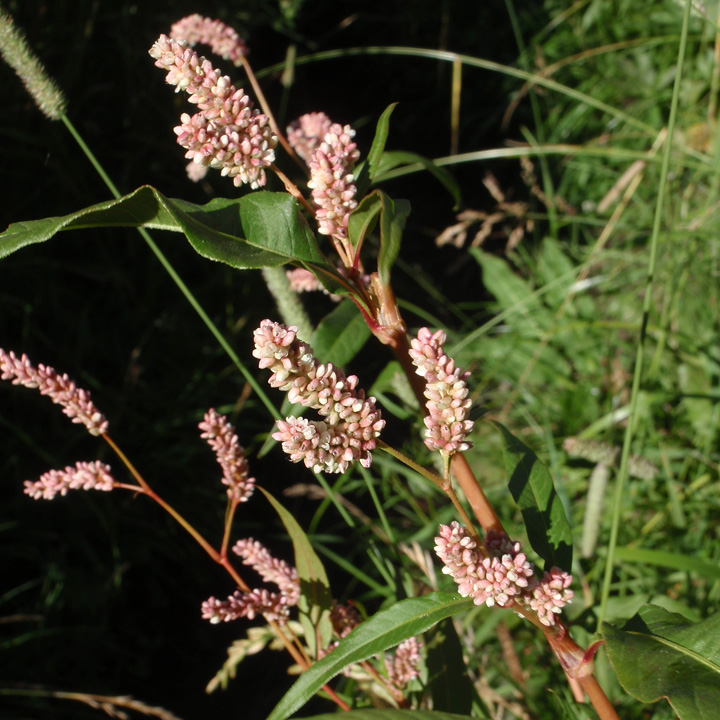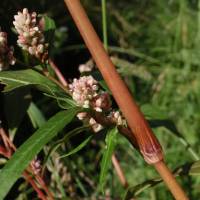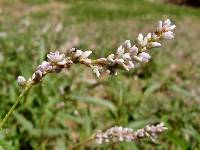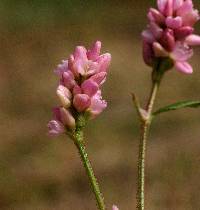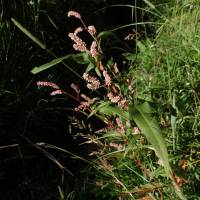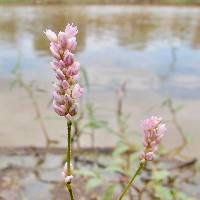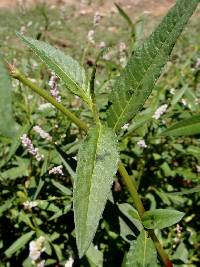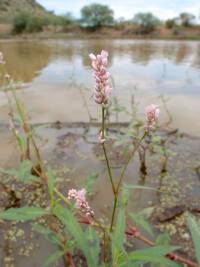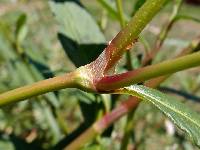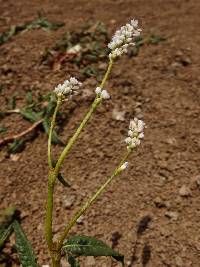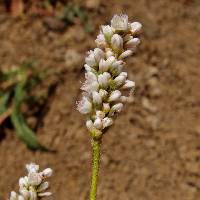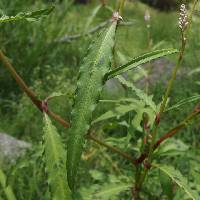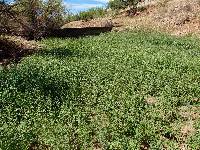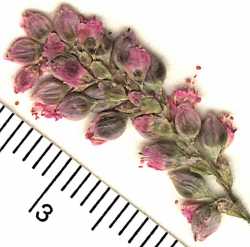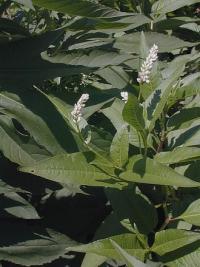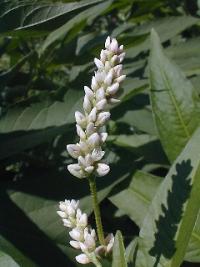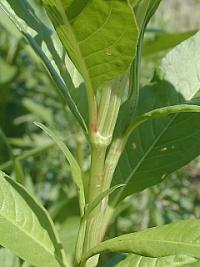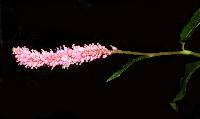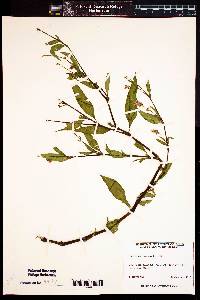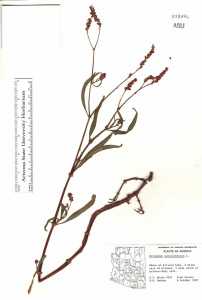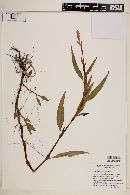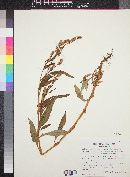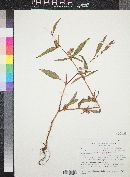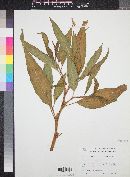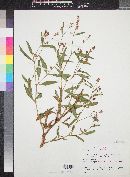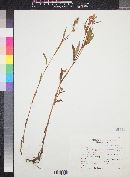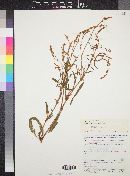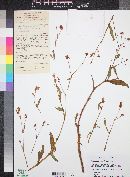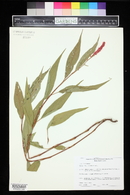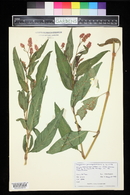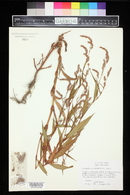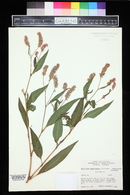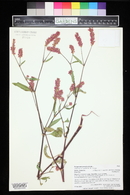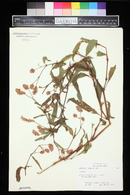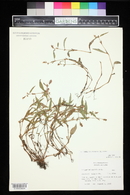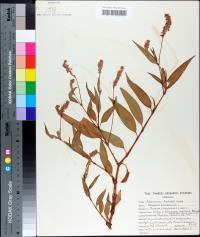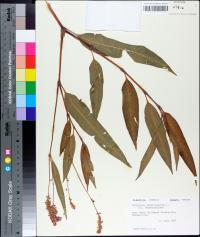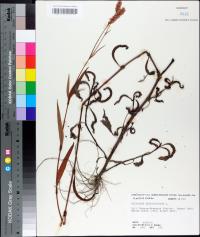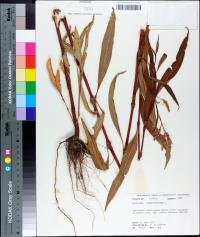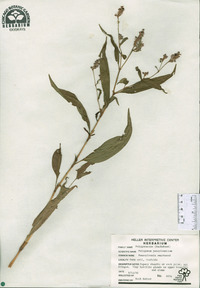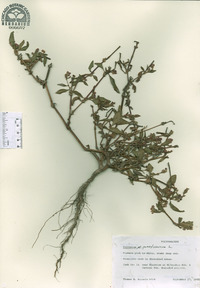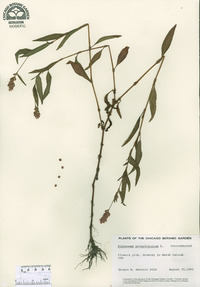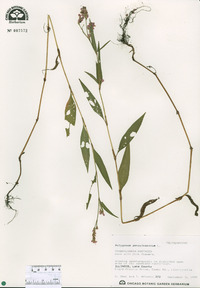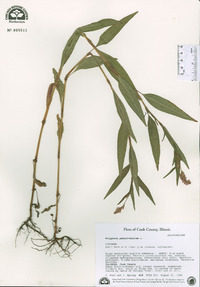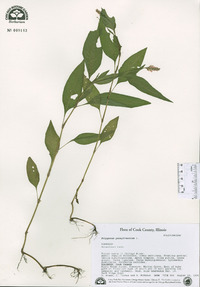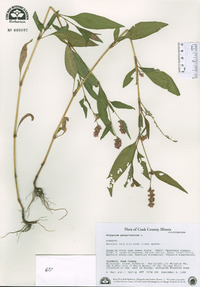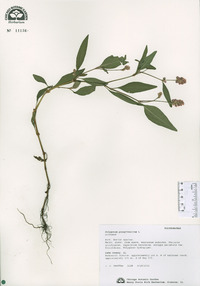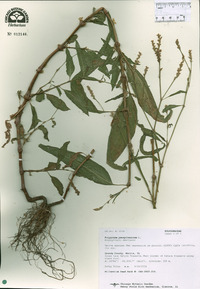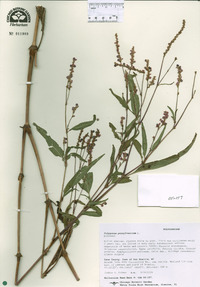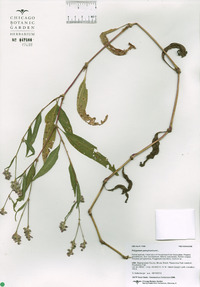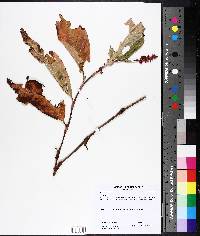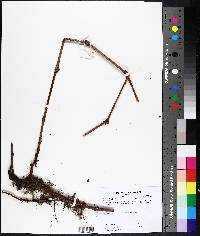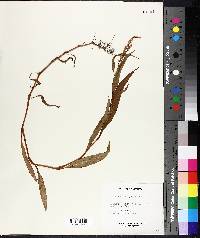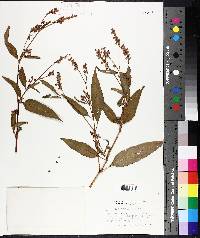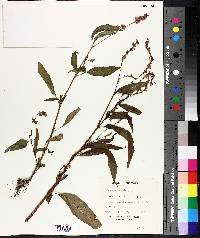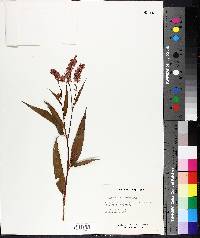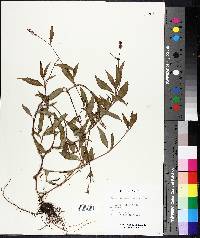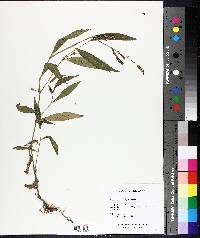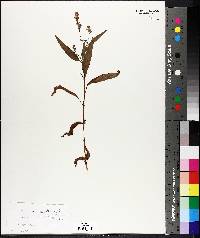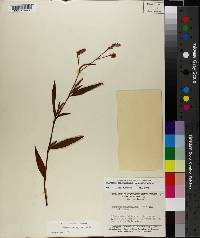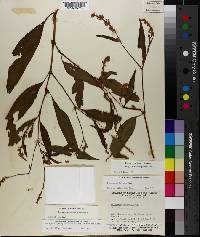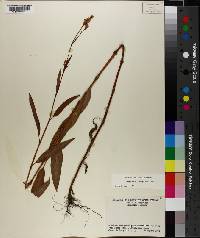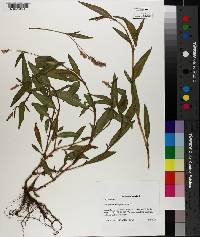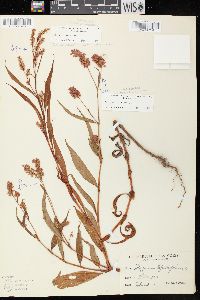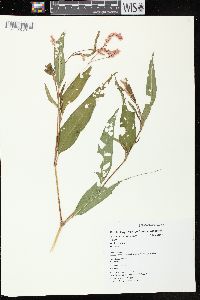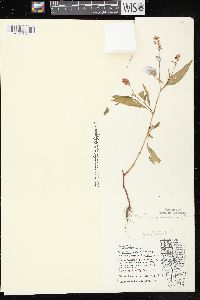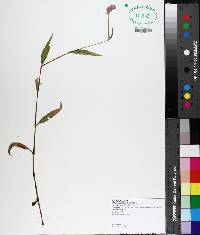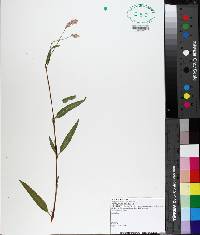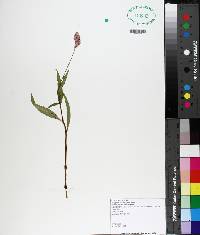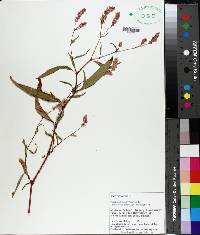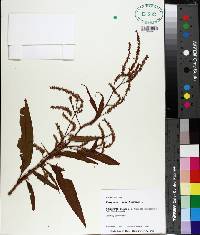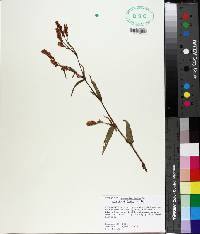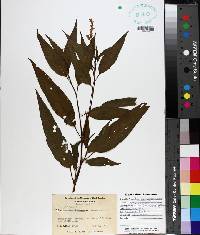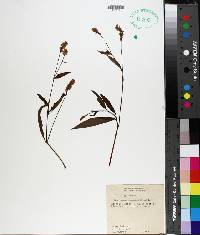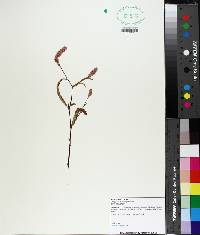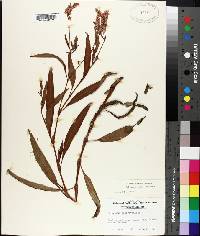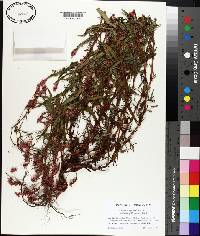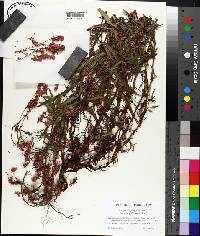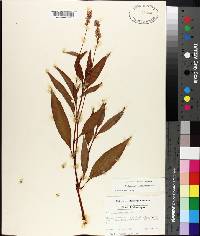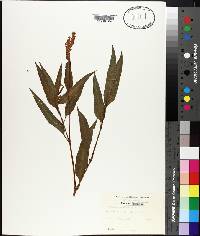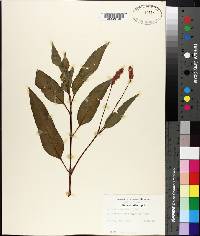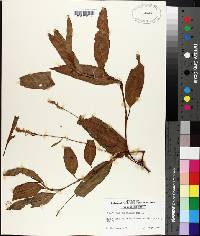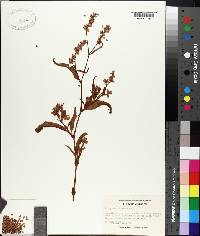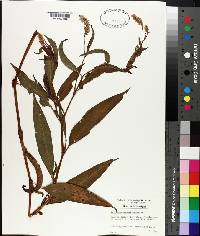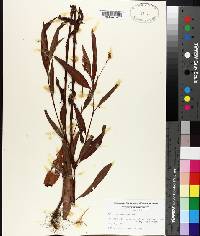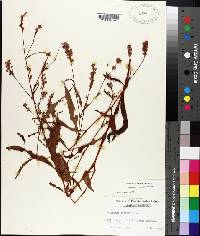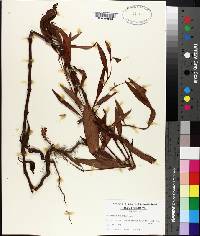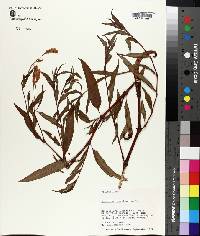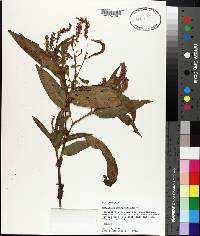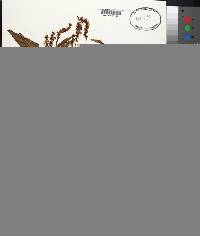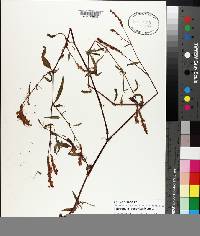
|
|
|
|
Family: Polygonaceae
Pinkweed, more...Pennsylvania knotweed, Pennsylvania smartweed, pinkweed, pinweed, Pennsylvania smartweed
[Persicaria mississippiensis (Stanford) Small, morePersicaria pensylvanica var. dura (Stanford) C.F. Reed, Persicaria pensylvanica var. laevigata (Fernald) Mohlenbr., Polygonum longistylum var. omissum (Greene) Stanford, Polygonum mexicanum auct. non Small, Polygonum mississippiense Stanford, Polygonum mississippiense var. interius Stanford, Polygonum omissum Greene, Polygonum pennsylvanicum L., Polygonum pensylvanicum L., Polygonum pensylvanicum f. albineum Farw., Polygonum pensylvanicum pensylvanicum , Polygonum pensylvanicum var. durum Stanford, Polygonum pensylvanicum var. eglandulosum J.C. Myers, Polygonum pensylvanicum var. genuinum Fern., Polygonum pensylvanicum var. laevigatum Fern., Polygonum pensylvanicum var. nesophilum Fernald, Polygonum pensylvanicum var. pensylvanicum , Polygonum pensylvanicum var. rosiflorum J.B.S. Norton] |
Plants annual, 1-20 dm; roots also occasionally arising from basal nodes; rhizomes and stolons absent. Stems ascending to erect, simple or branched, ribbed, glabrous or appressed-pubescent distally, eglandular or stipitate-glandular distally. Leaves: ocrea brownish, cylindric, 5-20 mm, chartaceous, base inflated, margins truncate, eciliate or ciliate with bristles to 0.5 mm, surface glabrous or appressed-pubescent, eglandular; petiole 0.1-2(-3) cm, glabrous or appressed-pubescent; blade sometimes with dark triangular or lunate blotch adaxially, narrowly to broadly lanceolate, 4-17(-23) × (0.5-)1-4.8 cm, base tapered to cuneate, margins antrorsely scabrous, apex acuminate, faces glabrous or appressed-pubescent, eglandular or glandular-punctate abaxially and occasionally adaxially. Inflorescences terminal and axillary, erect or rarely nodding, uninterrupted, 5-50 × 5-15 mm; peduncle 10-55(-70) mm, glabrous or pubescent, usually stipitate-glandular; ocreolae overlapping, margins eciliate or ciliate with bristles to 0.5 mm. Pedicels ascending, 1.5-4.5 mm. Flowers 2-14 per ocreate fascicle, homostylous; perianth greenish white to roseate, glabrous, not glandular-punctate, accrescent; tepals 5, connate ca. 1/ 1/ 3 their length, obovate to elliptic, 2.5-5 mm, veins prominent, not anchor-shaped, margins entire, apex obtuse to rounded; stamens 6-8, included; anthers yellow, pink, or red, elliptic; styles 2(-3), connate at bases. Achenes included or apex exserted, brown to black, discoid or, rarely, 3-gonous, without central hump on 1 side, 2.1-3.4 × 1.8-3 mm, shiny, smooth. 2n = 88. Flowering May-Dec. Moist, disturbed places, ditches, riverbanks, cultivated fields, shorelines of ponds and reservoirs; 0-1800 m; N.B., Nfld. and Labr. (Nfld.), N.S., Ont., Que.; Ala., Alaska, Ariz., Ark., Calif., Colo., Conn., Del., D.C., Fla., Ga., Ill., Ind., Iowa, Kans., Ky., La., Maine, Md., Mass., Mich., Minn., Miss., Mo., Mont., Nebr., Nev., N.H., N.J., N.Mex., N.Y., N.C., N.Dak., Ohio, Okla., Pa., R.I., S.C., S.Dak., Tenn., Tex., Utah, Vt., Va., W.Va., Wis., Wyo.; South America (Ecuador); Europe (England, Spain). Persicaria pensylvanica is a morphologically variable allotetraploid, with P. lapathifolia probably one of the parents (L. L. Consaul et al. 1991). Three or four varieties (under Polygonum) often have been accepted in North American floras; the characters on which these are based vary greatly within and among populations. J. W. Taylor-Lehman (1987) concluded that Polygonum pensylvanicum is best treated as a polymorphic species without infraspecific taxa, based on specimens primarily from Ohio. The heterostylous Persicaria bicornis often is included in P. pensylvanica. A single chromosome count of 2n = 22 reported by Á. Löve and D. Löve (1982), which could not be confirmed by Consaul et al. because the voucher could not be found, is excluded. Flowers with three styles and trigonous achenes are produced; they are exceedingly rare and probably mostly overlooked. Several Native American tribes prepared infusions and decoctions from P. pensylvanica, which they used as drugs for humans and horses (D. E. Moerman 1998).
Martin and Hutchins 1980, Kearney and Peebles 1969 Duration: Annual Nativity: Native Lifeform: Forb/Herb General: Annual with erect stems, 30-100 cm tall, branching, reddish-glandular above. Leaves: Alternate, lanceolate, 5-20 cm long, cuneate to rounded at the base, glabrous to glabrescent, petioled, ocrea entire or sometimes ciliate. Flowers: In erect spicate racemes, the peduncles densely covered with glandular hairs, glandular portion reddish, calyx 3-4 mm long, segments pink or purple, with 8 stamens. Fruits: Achenes 3-4 mm long, lenticular, lustrous. Ecology: Found on wet ground from 2,500-7,000 ft (762-2134 m); flowers July-September. Notes: Note the recent name change from Polygonum to Persicaria. Ethnobotany: Taken as an anticonvulsive for epilepsy, given to horses for urination problems, taken as an antihemorrhagic, as an aid in post-partum healing, as an antidiarrheal, and for hemorrhoids. Etymology: Polygonum is derived from Greek polys, many, and gonu, knee or joint, while pensylvanicum means of or from Pennsylvania. Synonyms: Persicaria bicornis, Persicaria longistyla, Persicaria mississippiensis, Persicaria pensylvanica, Persicaria pensylvanica var. dura, Polygonum bicorne, Polygonum longistylum, Polygonum longistylum var. omissum, Polygonum mexicanum, Polygonum mississippien Editor: SBuckley, 2010 Erect, branching annual to 2 m, or seldom prostrate; lvs lanceolate, acuminate; ocreae becoming lacerate, but not fringed-ciliate; racemes numerous, erect, commonly cylindric, blunt, 1.5-3 cm, ocreolae ovate, entire or minutely ciliate; perianth rose or white, scarcely exceeding the achene, 5-lobed to below the middle, the segments with several inconspicuous, branched and anastomosing veins; achenes lenticular, concave on both sides, 2.6-3.4 mm, 85-100% as wide; 2n=44. Fields and waste ground, especially in moist, rich soil; N.S. and Que. to Minn. and S.D., s. to Fla. and Tex. Highly variable, but scarcely divisible into significant vars. Heterostylic southern plants, reaching our range in s. Ill., have been segregated as P. bicorne Raf. (P. longistylum Small), but the populational relationship of these plants to the widespread, homostylic P. pensylvanicum remains to be elucidated. Gleason, Henry A. & Cronquist, Arthur J. 1991. Manual of vascular plants of northeastern United States and adjacent Canada. lxxv + 910 pp. ©The New York Botanical Garden. All rights reserved. Used by permission. From Flora of Indiana (1940) by Charles C. Deam Infrequent to frequent or common in low ground along streams and roadsides, in cultivated grounds, and in low grounds in general. No doubt it is found throughout the state. It has been my method to collect a single specimen of each species from each county. This species has been divided only recently and most of my collecting was done before the division was made. Since my specimens are now distributed among the three present groups, the absence of records from the northern part of the state is, I think, accidental. This species, as well as others of the genus, varies greatly in size, depending upon habitat and date of germination of the seed. Apparently the seed do not germinate under water and when they find lodgment in areas which are submerged until summer, the delayed germination, no doubt, accounts for the smaller plants. The largest one of which I have record is my specimen no. 39887 from low ground in Gibson County which I measured in the field. The height was 86 inches above the ground and the longest branch was 82 inches long. [Deam notes that a glabrous-leaved form is] frequent throughout the state in habitats similar to those of the species. …… Indiana Coefficient of Conservatism: C = 0 Wetland Indicator Status: FACW |
|
|
|
This project was made possible in part by the Institute of Museum and Library Services [MG-70-19-0057-19].
Powered by Symbiota

